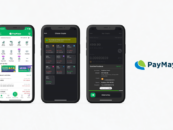Bangko Sentral ng Pilipinas (BSP), the Philippines’ central bank, has created a committee to look at the feasibility and policy implications of issuing its own digital currency, governor Benjamin E. Diokno said on July 29.
“We have to first look into the findings of the group before making any decisions,” Diokno said, quoted by the Manila Bulletin. “I expect the technical working group to submit their report next month,” he added.
Although he doesn’t believe cryptocurrencies will ever replace banknotes or coins, central bank digital currencies (CBDCs), on the other hand, could very well become the next form of fiat money.
“We do not see [cryptocurrencies] significantly affecting the present demand for physical currency,” he said, noting that blockchain technology “continues to elicit interest around revolutionizing the delivery of financial services.”
Digital payments on the rise in the Philippines
BSP’s interest in CBDCs comes at a time when digital payments are on the rise in the Philippines. Amid the COVID-19 health crisis, people are increasingly turning to digital transactions.
Major wireless carrier Globe Telecom’s GCash, the country’s largest provider of mobile money services, said the number of its registered users soared 150% in the month from mid-March. In May, the total amount of payments made on the platform soared eightfold from a year ago, the company said.
GCash is the largest mobile wallet in the Philippines with 20 million registered users.
According to BSP’s Diokno, between April and May, the volume of transactions on e-payment service InstaPay grew by 57%, while PesoNet, another e-wallet service, saw volume surge by an astonishing 325%.
BSP has set a target of raising the share of electronic payments to 50% in volume by 2023, though the figure only reached 10% by 2018.
Asian central banks pursue digital currency ambitions
The Philippines is the latest country to join the CBDC race.
The Bank of Thailand (BOT) announced on June 18 the project to develop the prototype of the payment system for businesses using a CBDC. The project will build upon the central bank’s existing blockchain initiative Project Inthanon.
On July 15, BOT assistant governor Vachira Arromdee told reporters that the central bank had already been using the CBDC for transactions with some businesses. In September, BOT will begin using the CBDC for transactions with the Hong Kong Monetary Authority, she added.
In Japan, the Bank of Japan has been experimenting with a CBDC. The government said in July that the launch of a digital yen would be considered as part of this year’s legislative agenda.
But it is China that has taken in the lead in this regard, having begun piloting its national digital currency project, the Digital Currency Electronic Payment (DCEP), earlier this year.
Most recently, China’s big four state-owned commercial banks, namely the Bank of China, the China Construction Bank, the Industrial and Commercial Bank of China, and the Agricultural Bank of China, started large-scale internal testing of the CBDC.
Users taking part in the trial can use the app to top up their accounts, withdraw money, make payments and transfer money after registering with their mobile phone number.
Featured image credit: edited from Unsplash
This article first appeared on fintechnews.sg









